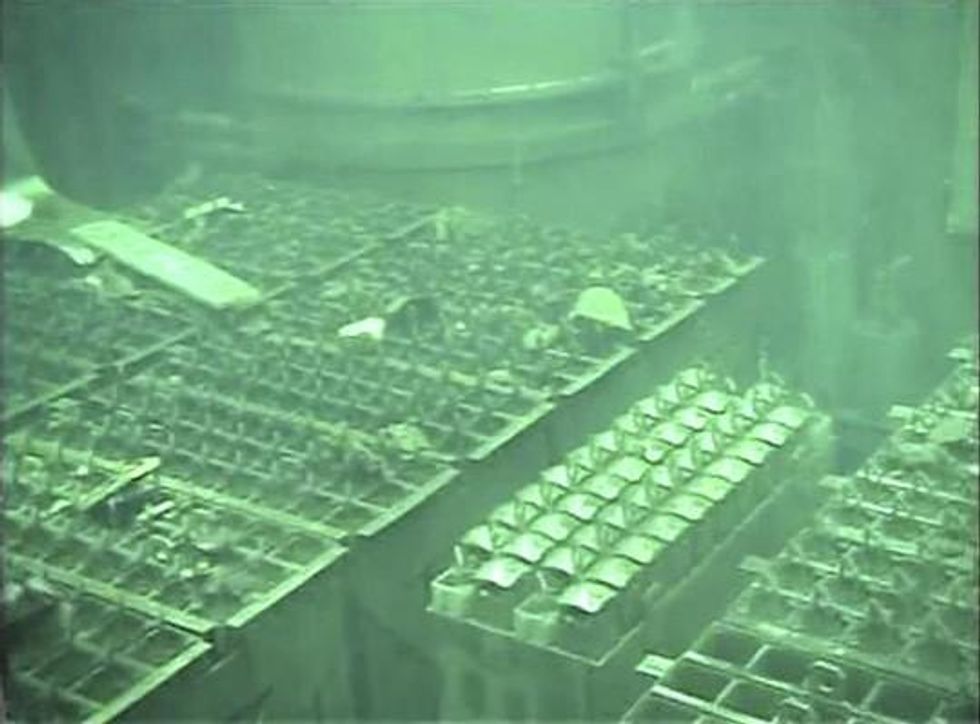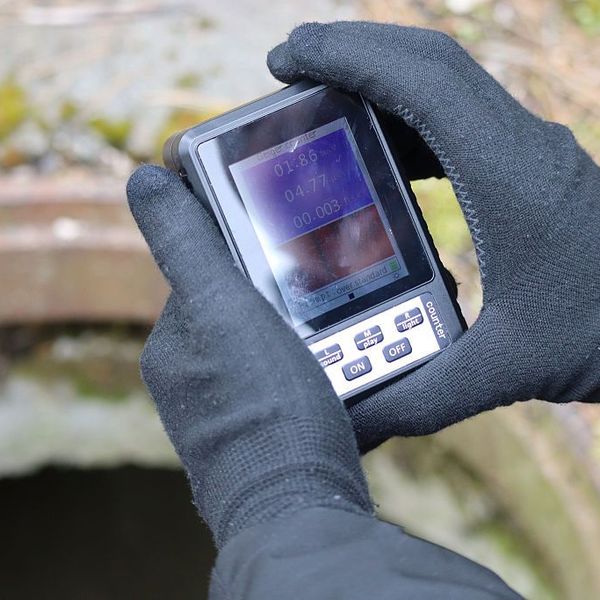Highly Dangerous Fukushima 4 Fuel Removal Begins Monday
The highly dangerous and unprecedented removal of the highly radioactive nuclear fuel rods in Fukushima Unit 4 will begin on Monday, November 18.

The highly dangerous and unprecedented removal of the highly radioactive nuclear fuel rods in Fukushima Unit 4 will begin on Monday, November 18.
The Unit 4 fuel rod removal is like to trying to pull cigarettes from a crushed pack.The Japanese Nuclear Regulation Authority (NRA) had previously said the process would begin in mid-November but kept the exact date secret 'for security reasons.' TEPCO has now confirmed that the operation will begin Monday.
The NRA said that it will provide 'enhanced oversight' to TEPCO as the company begins the hugely delicate process of removing 1,331 spent fuel assemblies and 202 unused assemblies. The fuel rods are brittle, potentially damaged, and still located high above the ground in a badly damaged building that has buckled and tilted and could collapse if another quake strikes.
The fuel assemblies are in a 32 x 40 feet concrete pool, the base of which is on the fourth story of the damaged reactor building. The assemblies - which contain plutonium, one of the most toxic substances known - are under 23 feet of water.
If the fuel rods - there are 50-70 in each of the assemblies, which weigh around 661 pounds and are 15 feet long - are exposed to air or if they break, catastrophic amounts of radioactive gases could be released into the atmosphere.
Arnie Gundersen, a veteran U.S. nuclear engineer and director of Fairewinds Energy Education, says the Unit 4 fuel rod removal is like to trying to pull cigarettes from a crushed pack.
The 1,331 used fuel rod assemblies contain radiation equivalent to 14,000 times the amount released in the atomic bomb attack on Hiroshima.
"Full release from the Unit-4 spent fuel pool, without any containment or control, could cause by far the most serious radiological disaster to date," say independent consultants Mycle Schneider and Antony Froggatt in a recent World Nuclear Industry Status Report.
An Urgent Message From Our Co-Founder
Dear Common Dreams reader, The U.S. is on a fast track to authoritarianism like nothing I've ever seen. Meanwhile, corporate news outlets are utterly capitulating to Trump, twisting their coverage to avoid drawing his ire while lining up to stuff cash in his pockets. That's why I believe that Common Dreams is doing the best and most consequential reporting that we've ever done. Our small but mighty team is a progressive reporting powerhouse, covering the news every day that the corporate media never will. Our mission has always been simple: To inform. To inspire. And to ignite change for the common good. Now here's the key piece that I want all our readers to understand: None of this would be possible without your financial support. That's not just some fundraising cliche. It's the absolute and literal truth. We don't accept corporate advertising and never will. We don't have a paywall because we don't think people should be blocked from critical news based on their ability to pay. Everything we do is funded by the donations of readers like you. Will you donate now to help power the nonprofit, independent reporting of Common Dreams? Thank you for being a vital member of our community. Together, we can keep independent journalism alive when it’s needed most. - Craig Brown, Co-founder |

The highly dangerous and unprecedented removal of the highly radioactive nuclear fuel rods in Fukushima Unit 4 will begin on Monday, November 18.
The Unit 4 fuel rod removal is like to trying to pull cigarettes from a crushed pack.The Japanese Nuclear Regulation Authority (NRA) had previously said the process would begin in mid-November but kept the exact date secret 'for security reasons.' TEPCO has now confirmed that the operation will begin Monday.
The NRA said that it will provide 'enhanced oversight' to TEPCO as the company begins the hugely delicate process of removing 1,331 spent fuel assemblies and 202 unused assemblies. The fuel rods are brittle, potentially damaged, and still located high above the ground in a badly damaged building that has buckled and tilted and could collapse if another quake strikes.
The fuel assemblies are in a 32 x 40 feet concrete pool, the base of which is on the fourth story of the damaged reactor building. The assemblies - which contain plutonium, one of the most toxic substances known - are under 23 feet of water.
If the fuel rods - there are 50-70 in each of the assemblies, which weigh around 661 pounds and are 15 feet long - are exposed to air or if they break, catastrophic amounts of radioactive gases could be released into the atmosphere.
Arnie Gundersen, a veteran U.S. nuclear engineer and director of Fairewinds Energy Education, says the Unit 4 fuel rod removal is like to trying to pull cigarettes from a crushed pack.
The 1,331 used fuel rod assemblies contain radiation equivalent to 14,000 times the amount released in the atomic bomb attack on Hiroshima.
"Full release from the Unit-4 spent fuel pool, without any containment or control, could cause by far the most serious radiological disaster to date," say independent consultants Mycle Schneider and Antony Froggatt in a recent World Nuclear Industry Status Report.

The highly dangerous and unprecedented removal of the highly radioactive nuclear fuel rods in Fukushima Unit 4 will begin on Monday, November 18.
The Unit 4 fuel rod removal is like to trying to pull cigarettes from a crushed pack.The Japanese Nuclear Regulation Authority (NRA) had previously said the process would begin in mid-November but kept the exact date secret 'for security reasons.' TEPCO has now confirmed that the operation will begin Monday.
The NRA said that it will provide 'enhanced oversight' to TEPCO as the company begins the hugely delicate process of removing 1,331 spent fuel assemblies and 202 unused assemblies. The fuel rods are brittle, potentially damaged, and still located high above the ground in a badly damaged building that has buckled and tilted and could collapse if another quake strikes.
The fuel assemblies are in a 32 x 40 feet concrete pool, the base of which is on the fourth story of the damaged reactor building. The assemblies - which contain plutonium, one of the most toxic substances known - are under 23 feet of water.
If the fuel rods - there are 50-70 in each of the assemblies, which weigh around 661 pounds and are 15 feet long - are exposed to air or if they break, catastrophic amounts of radioactive gases could be released into the atmosphere.
Arnie Gundersen, a veteran U.S. nuclear engineer and director of Fairewinds Energy Education, says the Unit 4 fuel rod removal is like to trying to pull cigarettes from a crushed pack.
The 1,331 used fuel rod assemblies contain radiation equivalent to 14,000 times the amount released in the atomic bomb attack on Hiroshima.
"Full release from the Unit-4 spent fuel pool, without any containment or control, could cause by far the most serious radiological disaster to date," say independent consultants Mycle Schneider and Antony Froggatt in a recent World Nuclear Industry Status Report.

